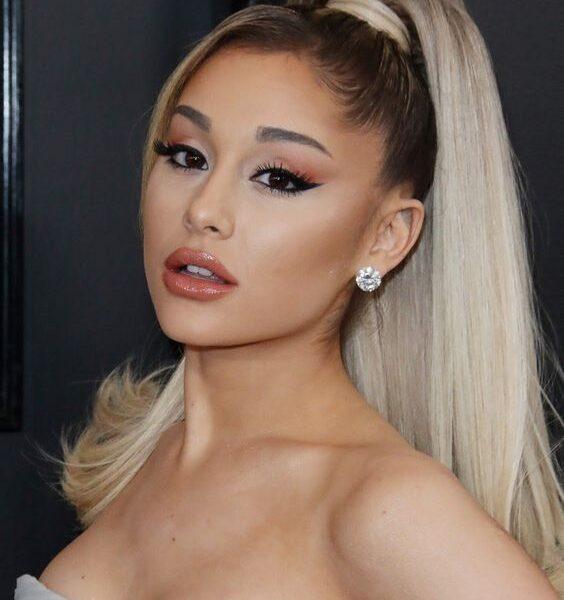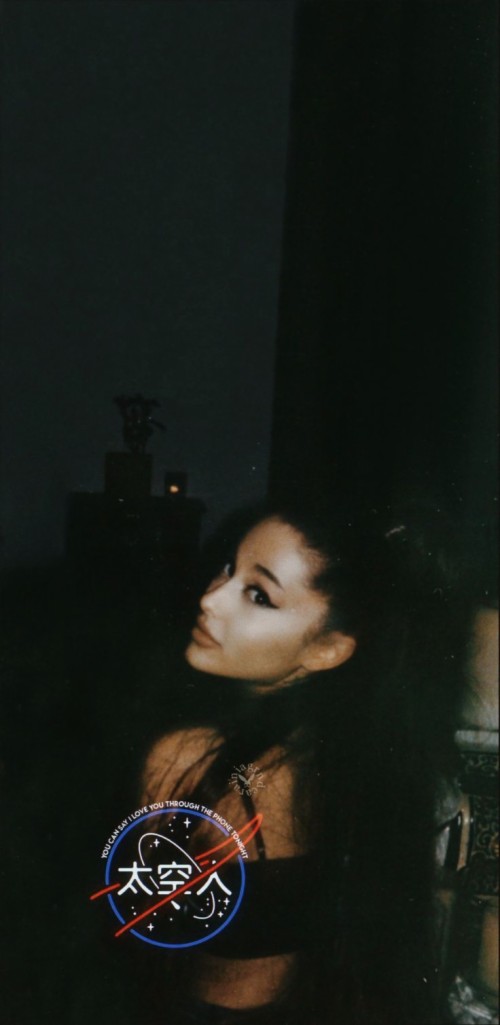Fake Nude Ariana Grande: The Truth Behind The Viral Sensation
Let me break it down for you, folks. In this digital age, fake content is everywhere, and one name that keeps popping up is Ariana Grande. The internet has been buzzing with so-called "fake nude" images of this global superstar. But hold up—what’s real, what’s fake, and why should we care? Let’s dive into the drama and get the facts straight.
Now, before we go any further, let’s get one thing clear. The term "fake nude" is a controversial topic that raises questions about privacy, consent, and digital manipulation. It’s not just about Ariana Grande; it’s about how technology is being used—and sometimes misused—in ways that can harm people. So buckle up, because we’re about to unpack this whole situation.
As someone who loves to stay informed, I want to make sure we’re approaching this topic with respect, accuracy, and a healthy dose of skepticism. Because at the end of the day, it’s not just about a celebrity—it’s about the bigger picture of how we handle information online. Let’s get started, shall we?
Read also:Evelyn Rose Nude A Comprehensive Look At The Controversy And The Star
Understanding the Phenomenon of Fake Nude Content
First things first, let’s talk about what "fake nude" even means. In simple terms, it’s when someone uses technology to create images or videos that make it look like a person is naked, even if they’re not. This is often done using AI or photo editing tools, and it’s becoming disturbingly common on the internet.
Now, when it comes to Ariana Grande, her name has been thrown around in connection with these types of images. But here’s the deal: none of these images are real. They’re all digitally altered or completely fabricated. And honestly, that’s a big problem.
According to a report by the Cyber Civil Rights Initiative, deepfake technology is being used more and more to create non-consensual intimate images. This isn’t just a harmless prank—it’s a violation of someone’s privacy and dignity. And celebrities like Ariana Grande are often targeted because of their massive public presence.
Why Do People Create Fake Nude Content?
So, why do people even bother creating this stuff? Well, there are a few reasons. For some, it’s all about attention. Fake nude images can go viral in seconds, and that kind of exposure can be tempting for those looking to gain fame—or notoriety—online.
Others might do it out of malice or a desire to harm someone’s reputation. And let’s not forget the financial aspect. Some people sell these fake images on dark web marketplaces or use them to scam others. It’s a dark side of the internet that we can’t ignore.
But here’s the kicker: creating or sharing fake nude content without someone’s consent is illegal in many places. In the U.S., for example, it’s considered a form of cybercrime. So if you’re thinking about jumping on this bandwagon, think again.
Read also:Will Smith Nude The Untold Story Behind The Controversy And Its Impact
Ariana Grande: A Quick Bio
Before we dive deeper into the fake nude controversy, let’s take a moment to talk about Ariana Grande herself. She’s more than just a pop star—she’s a global icon, a businesswoman, and an advocate for important causes. Here’s a quick rundown of her life and career:
Ariana Grande's Personal Details
| Full Name | Ariana Grande-Butera |
|---|---|
| Birthdate | June 26, 1993 |
| Place of Birth | Boca Raton, Florida, USA |
| Occupation | Singer, Actress, Songwriter |
| Net Worth (2023) | $100 million+ |
Ariana Grande has been in the spotlight since she was a teenager, starting with her role on the Nickelodeon show "Victorious." Since then, she’s released multiple chart-topping albums, won countless awards, and become one of the most successful artists of her generation. But with fame comes scrutiny—and unfortunately, that includes baseless rumors and fake content.
How Fake Nude Images Are Created
Let’s get technical for a moment. How exactly are these fake nude images made? It all comes down to technology. Deepfake software uses artificial intelligence to manipulate photos and videos, making it possible to create incredibly realistic—but completely fake—content.
Here’s a quick breakdown of the process:
- Data Collection: The software needs a bunch of images of the person it’s going to "fake." These could be photos from social media, magazines, or other public sources.
- AI Training: The software analyzes these images to learn how the person looks from different angles and in different lighting conditions.
- Image Manipulation: Using this data, the software creates a new image that looks like the person but isn’t real. It can add or remove elements, change the background, or even create entirely new scenarios.
While this technology has some cool applications—like restoring old photos or creating special effects for movies—it’s also being misused in harmful ways. And that’s where the problem lies.
The Legal and Ethical Implications
Now, let’s talk about the bigger picture. Creating or sharing fake nude content without someone’s consent is not only unethical but also illegal in many jurisdictions. In the U.S., for example, revenge porn laws make it a crime to distribute intimate images without the subject’s permission.
But it’s not just about the law. There’s also the ethical side of things. When we share or consume this kind of content, we’re contributing to a culture that values sensationalism over respect. And that’s something we all need to think about.
Why Celebrities Are Often Targeted
So why do celebrities like Ariana Grande keep getting targeted by fake nude content? There are a few reasons. First, they’re in the public eye, which makes them easy targets for people looking to stir up drama. Second, their fans are often passionate and engaged, which means fake content can spread quickly.
But here’s the thing: celebrities are people too. They have feelings, families, and lives outside of the spotlight. When fake content is created or shared about them, it can have real-world consequences. It can affect their mental health, damage their reputation, and even put them in physical danger.
According to a study by the Online Abuse Prevention Initiative, nearly 70% of women who experience online harassment report feeling anxious or fearful as a result. And that’s just the tip of the iceberg.
The Role of Social Media
Social media platforms play a big role in how fake nude content spreads. While most platforms have policies against non-consensual intimate imagery, enforcement can be inconsistent. Some fake images slip through the cracks, while others are taken down quickly.
But it’s not just about the platforms themselves. It’s also about the users. When we see fake content online, we have a responsibility to question its authenticity and refuse to share it. Because every time we click, like, or comment, we’re giving that content more power.
How to Spot Fake Nude Content
Okay, so now that we know what fake nude content is and why it’s a problem, how can we spot it? Here are a few tips:
- Check the Source: Is the content coming from a reputable source? If it’s from a random website or social media account, it’s probably not legit.
- Look for Clues: Fake images often have telltale signs, like distorted faces, weird lighting, or mismatched backgrounds.
- Do Your Research: A quick Google search can often reveal whether an image is real or fake. If it’s fake, there’s a good chance someone has already debunked it.
And if you’re ever in doubt, it’s always better to err on the side of caution. Don’t share content unless you’re absolutely sure it’s real—and even then, ask yourself whether sharing it is really necessary.
Tools for Verifying Images
There are also some cool tools out there that can help you verify images. Reverse image search engines like Google Images or TinEye can help you track down the original source of an image. And AI-based tools like Deeptrace can detect deepfakes with impressive accuracy.
But remember, no tool is perfect. The best defense against fake content is critical thinking. So stay sharp, folks.
The Impact on Victims
Now, let’s talk about the human side of this issue. Fake nude content can have a devastating impact on its victims. It can lead to emotional distress, damage relationships, and even affect career opportunities. And for celebrities like Ariana Grande, the impact can be amplified by the sheer scale of their public presence.
According to a report by the National Women’s Law Center, victims of non-consensual intimate imagery often experience anxiety, depression, and even PTSD. And that’s not something we should take lightly.
But here’s the thing: we all have a role to play in making the internet a safer place. By refusing to engage with or share fake content, we can help protect the people who are targeted by it. And that’s something we can all feel good about.
How to Support Victims
If someone you know has been affected by fake nude content, there are a few things you can do to help:
- Listen and Believe: Sometimes, just being there to listen can make a huge difference.
- Offer Practical Help: Help them report the content to the platform where it was posted or connect them with legal resources.
- Spread Awareness: Educate others about the dangers of fake content and how to spot it.
And if you’re a victim yourself, know that you’re not alone. There are resources available to help you, and you deserve to be treated with respect and dignity.
The Future of Digital Privacy
As technology continues to evolve, so do the challenges of digital privacy. It’s up to all of us to stay informed and advocate for policies that protect people’s rights online. Whether it’s pushing for stronger laws against cybercrime or supporting ethical tech development, there’s plenty we can do to make a difference.
And let’s not forget the role of education. The more we know about how technology works—and how it can be misused—the better equipped we are to navigate the digital world safely.
So here’s my challenge to you, folks: be the change you want to see. Refuse to engage with fake content, educate others about its dangers, and support policies that protect people’s privacy. Because at the end of the day, it’s not just about one person—it’s about all of us.
Final Thoughts
Let’s wrap things up, shall we? Fake nude content is a serious issue that affects real people—including celebrities like Ariana Grande. While technology has given us incredible tools, it’s also opened the door to misuse and abuse. But by staying informed, using critical thinking, and supporting each other, we can make the internet a safer place for everyone.
So what’s next? I encourage you to share this article with your friends and family. The more people who understand this issue, the better. And if you’re feeling inspired to take action, consider supporting organizations that fight against online harassment and abuse.
Thanks for reading, and remember: knowledge is power. Stay safe out there, folks!



![HOT LEAK! Ariana Grande Nude Pics Revealed [Full Set] Leaked Pie](https://leakedpie.com/wp-content/uploads/2017/06/Ariana-Grande-tongue-out-selfie-e1498854099480.jpg)